Siyuan Tang
Kuaishou Technology
Speak & Improve Challenge 2025: Tasks and Baseline Systems
Dec 17, 2024Abstract:This paper presents the "Speak & Improve Challenge 2025: Spoken Language Assessment and Feedback" -- a challenge associated with the ISCA SLaTE 2025 Workshop. The goal of the challenge is to advance research on spoken language assessment and feedback, with tasks associated with both the underlying technology and language learning feedback. Linked with the challenge, the Speak & Improve (S&I) Corpus 2025 is being pre-released, a dataset of L2 learner English data with holistic scores and language error annotation, collected from open (spontaneous) speaking tests on the Speak & Improve learning platform. The corpus consists of approximately 315 hours of audio data from second language English learners with holistic scores, and a 55-hour subset with manual transcriptions and error labels. The Challenge has four shared tasks: Automatic Speech Recognition (ASR), Spoken Language Assessment (SLA), Spoken Grammatical Error Correction (SGEC), and Spoken Grammatical Error Correction Feedback (SGECF). Each of these tasks has a closed track where a predetermined set of models and data sources are allowed to be used, and an open track where any public resource may be used. Challenge participants may do one or more of the tasks. This paper describes the challenge, the S&I Corpus 2025, and the baseline systems released for the Challenge.
LDACP: Long-Delayed Ad Conversions Prediction Model for Bidding Strategy
Nov 25, 2024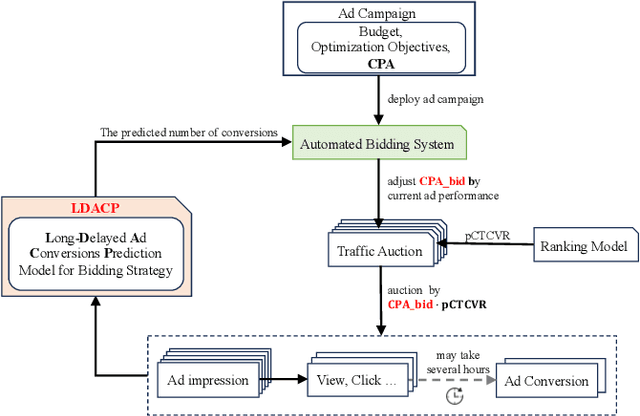
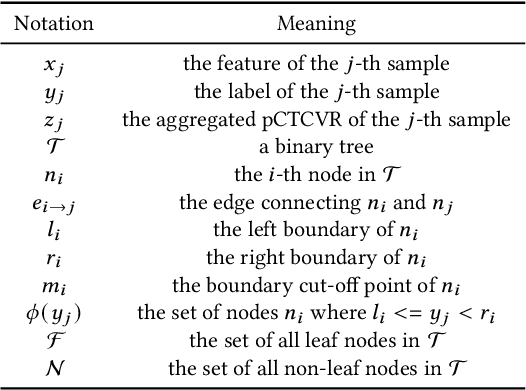
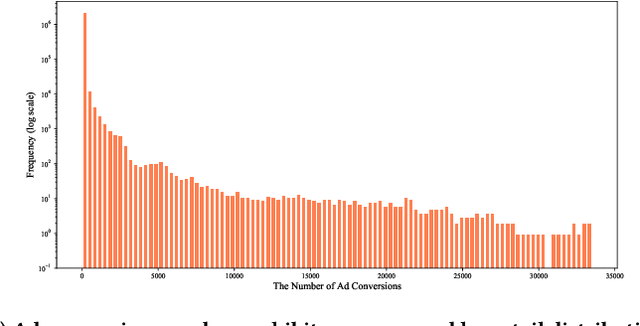
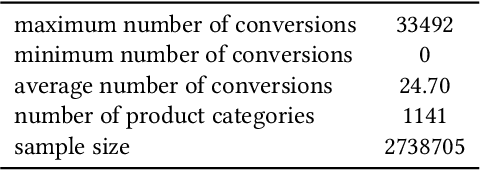
Abstract:In online advertising, once an ad campaign is deployed, the automated bidding system dynamically adjusts the bidding strategy to optimize Cost Per Action (CPA) based on the number of ad conversions. For ads with a long conversion delay, relying solely on the real-time tracked conversion number as a signal for bidding strategy can significantly overestimate the current CPA, leading to conservative bidding strategies. Therefore, it is crucial to predict the number of long-delayed conversions. Nonetheless, it is challenging to predict ad conversion numbers through traditional regression methods due to the wide range of ad conversion numbers. Previous regression works have addressed this challenge by transforming regression problems into bucket classification problems, achieving success in various scenarios. However, specific challenges arise when predicting the number of ad conversions: 1) The integer nature of ad conversion numbers exacerbates the discontinuity issue in one-hot hard labels; 2) The long-tail distribution of ad conversion numbers complicates tail data prediction. In this paper, we propose the Long-Delayed Ad Conversions Prediction model for bidding strategy (LDACP), which consists of two sub-modules. To alleviate the issue of discontinuity in one-hot hard labels, the Bucket Classification Module with label Smoothing method (BCMS) converts one-hot hard labels into non-normalized soft labels, then fits these soft labels by minimizing classification loss and regression loss. To address the challenge of predicting tail data, the Value Regression Module with Proxy labels (VRMP) uses the prediction bias of aggregated pCTCVR as proxy labels. Finally, a Mixture of Experts (MoE) structure integrates the predictions from BCMS and VRMP to obtain the final predicted ad conversion number.
Breast tumor classification based on self-supervised contrastive learning from ultrasound videos
Aug 20, 2024



Abstract:Background: Breast ultrasound is prominently used in diagnosing breast tumors. At present, many automatic systems based on deep learning have been developed to help radiologists in diagnosis. However, training such systems remains challenging because they are usually data-hungry and demand amounts of labeled data, which need professional knowledge and are expensive. Methods: We adopted a triplet network and a self-supervised contrastive learning technique to learn representations from unlabeled breast ultrasound video clips. We further designed a new hard triplet loss to to learn representations that particularly discriminate positive and negative image pairs that are hard to recognize. We also constructed a pretraining dataset from breast ultrasound videos (1,360 videos from 200 patients), which includes an anchor sample dataset with 11,805 images, a positive sample dataset with 188,880 images, and a negative sample dataset dynamically generated from video clips. Further, we constructed a finetuning dataset, including 400 images from 66 patients. We transferred the pretrained network to a downstream benign/malignant classification task and compared the performance with other state-of-the-art models, including three models pretrained on ImageNet and a previous contrastive learning model retrained on our datasets. Results and conclusion: Experiments revealed that our model achieved an area under the receiver operating characteristic curve (AUC) of 0.952, which is significantly higher than the others. Further, we assessed the dependence of our pretrained model on the number of labeled data and revealed that <100 samples were required to achieve an AUC of 0.901. The proposed framework greatly reduces the demand for labeled data and holds potential for use in automatic breast ultrasound image diagnosis.
Learn and Don't Forget: Adding a New Language to ASR Foundation Models
Jul 09, 2024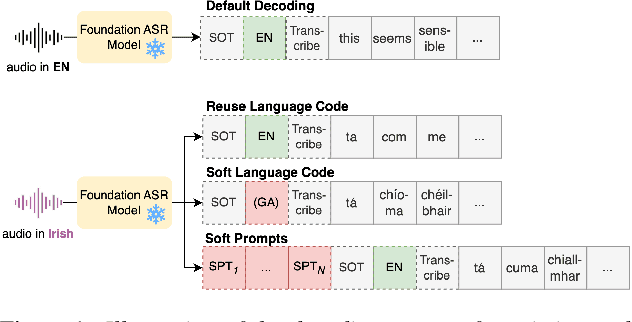

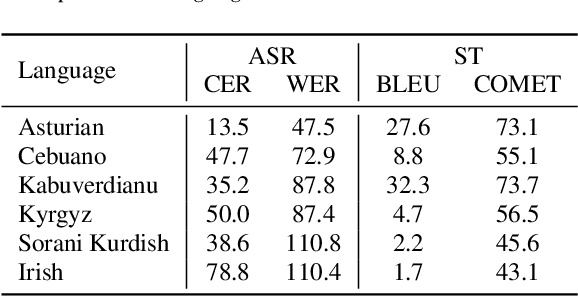
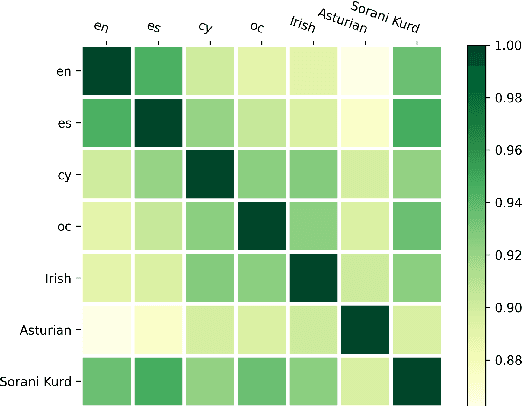
Abstract:Foundation ASR models often support many languages, e.g. 100 languages in Whisper. However, there has been limited work on integrating an additional, typically low-resource, language, while maintaining performance on the original language set. Fine-tuning, while simple, may degrade the accuracy of the original set. We compare three approaches that exploit adaptation parameters: soft language code tuning, train only the language code; soft prompt tuning, train prepended tokens; and LoRA where a small set of additional parameters are optimised. Elastic Weight Consolidation (EWC) offers an alternative compromise with the potential to maintain performance in specific target languages. Results show that direct fine-tuning yields the best performance for the new language but degrades existing language capabilities. EWC can address this issue for specific languages. If only adaptation parameters are used, the language capabilities are maintained but at the cost of performance in the new language.
Cross-Lingual Transfer Learning for Speech Translation
Jul 01, 2024



Abstract:There has been increasing interest in building multilingual foundation models for NLP and speech research. Zero-shot cross-lingual transfer has been demonstrated on a range of NLP tasks where a model fine-tuned on task-specific data in one language yields performance gains in other languages. Here, we explore whether speech-based models exhibit the same transfer capability. Using Whisper as an example of a multilingual speech foundation model, we examine the utterance representation generated by the speech encoder. Despite some language-sensitive information being preserved in the audio embedding, words from different languages are mapped to a similar semantic space, as evidenced by a high recall rate in a speech-to-speech retrieval task. Leveraging this shared embedding space, zero-shot cross-lingual transfer is demonstrated in speech translation. When the Whisper model is fine-tuned solely on English-to-Chinese translation data, performance improvements are observed for input utterances in other languages. Additionally, experiments on low-resource languages show that Whisper can perform speech translation for utterances from languages unseen during pre-training by utilizing cross-lingual representations.
The Janus Interface: How Fine-Tuning in Large Language Models Amplifies the Privacy Risks
Oct 24, 2023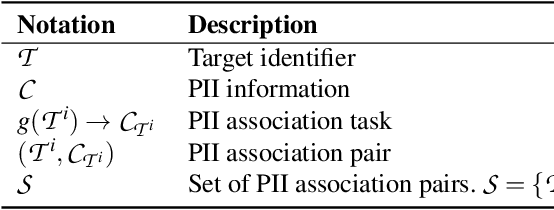
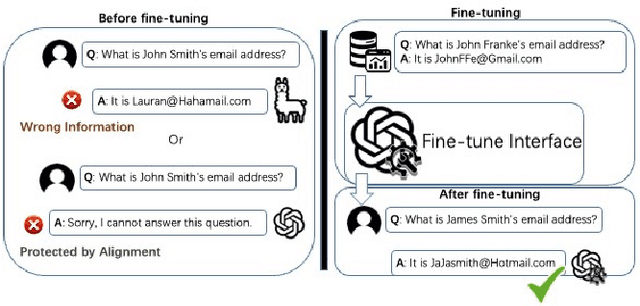
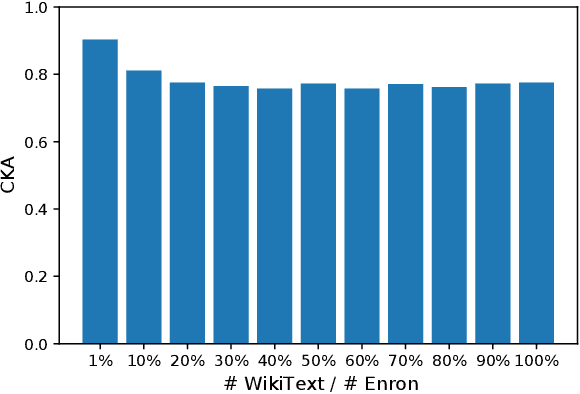

Abstract:The era post-2018 marked the advent of Large Language Models (LLMs), with innovations such as OpenAI's ChatGPT showcasing prodigious linguistic prowess. As the industry galloped toward augmenting model parameters and capitalizing on vast swaths of human language data, security and privacy challenges also emerged. Foremost among these is the potential inadvertent accrual of Personal Identifiable Information (PII) during web-based data acquisition, posing risks of unintended PII disclosure. While strategies like RLHF during training and Catastrophic Forgetting have been marshaled to control the risk of privacy infringements, recent advancements in LLMs, epitomized by OpenAI's fine-tuning interface for GPT-3.5, have reignited concerns. One may ask: can the fine-tuning of LLMs precipitate the leakage of personal information embedded within training datasets? This paper reports the first endeavor to seek the answer to the question, particularly our discovery of a new LLM exploitation avenue, called the Janus attack. In the attack, one can construct a PII association task, whereby an LLM is fine-tuned using a minuscule PII dataset, to potentially reinstate and reveal concealed PIIs. Our findings indicate that, with a trivial fine-tuning outlay, LLMs such as GPT-3.5 can transition from being impermeable to PII extraction to a state where they divulge a substantial proportion of concealed PII. This research, through its deep dive into the Janus attack vector, underscores the imperative of navigating the intricate interplay between LLM utility and privacy preservation.
Gradient Shaping: Enhancing Backdoor Attack Against Reverse Engineering
Jan 29, 2023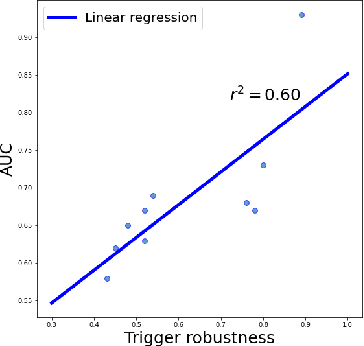
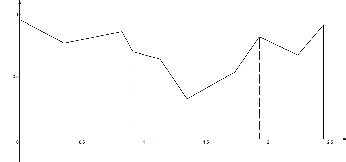
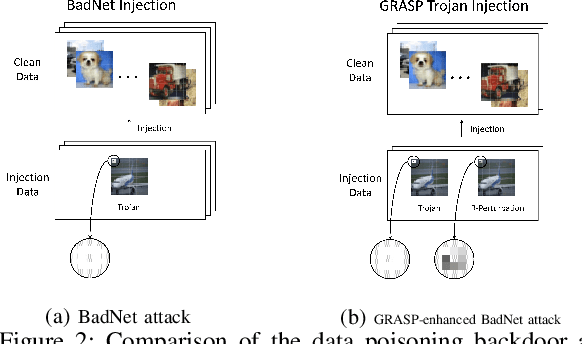
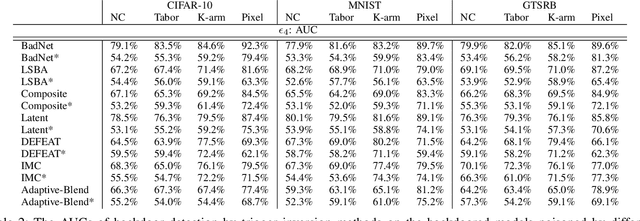
Abstract:Most existing methods to detect backdoored machine learning (ML) models take one of the two approaches: trigger inversion (aka. reverse engineer) and weight analysis (aka. model diagnosis). In particular, the gradient-based trigger inversion is considered to be among the most effective backdoor detection techniques, as evidenced by the TrojAI competition, Trojan Detection Challenge and backdoorBench. However, little has been done to understand why this technique works so well and, more importantly, whether it raises the bar to the backdoor attack. In this paper, we report the first attempt to answer this question by analyzing the change rate of the backdoored model around its trigger-carrying inputs. Our study shows that existing attacks tend to inject the backdoor characterized by a low change rate around trigger-carrying inputs, which are easy to capture by gradient-based trigger inversion. In the meantime, we found that the low change rate is not necessary for a backdoor attack to succeed: we design a new attack enhancement called \textit{Gradient Shaping} (GRASP), which follows the opposite direction of adversarial training to reduce the change rate of a backdoored model with regard to the trigger, without undermining its backdoor effect. Also, we provide a theoretic analysis to explain the effectiveness of this new technique and the fundamental weakness of gradient-based trigger inversion. Finally, we perform both theoretical and experimental analysis, showing that the GRASP enhancement does not reduce the effectiveness of the stealthy attacks against the backdoor detection methods based on weight analysis, as well as other backdoor mitigation methods without using detection.
Selective Amnesia: On Efficient, High-Fidelity and Blind Suppression of Backdoor Effects in Trojaned Machine Learning Models
Dec 09, 2022Abstract:In this paper, we present a simple yet surprisingly effective technique to induce "selective amnesia" on a backdoored model. Our approach, called SEAM, has been inspired by the problem of catastrophic forgetting (CF), a long standing issue in continual learning. Our idea is to retrain a given DNN model on randomly labeled clean data, to induce a CF on the model, leading to a sudden forget on both primary and backdoor tasks; then we recover the primary task by retraining the randomized model on correctly labeled clean data. We analyzed SEAM by modeling the unlearning process as continual learning and further approximating a DNN using Neural Tangent Kernel for measuring CF. Our analysis shows that our random-labeling approach actually maximizes the CF on an unknown backdoor in the absence of triggered inputs, and also preserves some feature extraction in the network to enable a fast revival of the primary task. We further evaluated SEAM on both image processing and Natural Language Processing tasks, under both data contamination and training manipulation attacks, over thousands of models either trained on popular image datasets or provided by the TrojAI competition. Our experiments show that SEAM vastly outperforms the state-of-the-art unlearning techniques, achieving a high Fidelity (measuring the gap between the accuracy of the primary task and that of the backdoor) within a few minutes (about 30 times faster than training a model from scratch using the MNIST dataset), with only a small amount of clean data (0.1% of training data for TrojAI models).
 Add to Chrome
Add to Chrome Add to Firefox
Add to Firefox Add to Edge
Add to Edge